Used in:
What does the Book of Mormon state?
- Elephants existed during the times of the Jaredites
At face value - Did elephants exist in the New World?
Statement
- See the information below about common mistakes in citing evidence of elephants in Mesoamerica.
- See the information below for two evidences of elephants in Mesoamerica
Assessment
- Elephants were endemic to Mesoamerica
Additional Material
- Paredon
- ELEPHANT REMAINS IN MEXICO Anonymous; American Antiquarian, 25:395-397, 1903.
- From the City of Mexico comes a statement bearing the signature of Dr. Nicholas Leon, archaeologist of the National Museum of Mexico. The signature would justify the belief that proper investigation of the facts related has been made. The one great fact is that an ancient city, which was located near the present town of Paredon, in the state of Coahuila, some 500 miles north of the City of Mexico, was suddenly destroyed in some past age by an overflow of water and mud, and that its remains are still existent on the spot. Many massive walls have been found, but they are covered with a mass of deposited earth, sixty feet in thickness. And mingled in this earth are human skeletons, the tusks of elephants, etc. , are distributed in a way which indicates that the overflow of water and mud was sudden, giving no time for escape...
- According to the estimates of the scientists under whose directions the excavations are now being made, the city in question had a population of least 50,000.
- "The destruction which was brought by the flood was complete. All the inhabitants of the cities were killed, as well as all the animals. Skeletons of the human inhabitants of the cities and of the animals are strewn all through the debris, from a depth of three feet from the surface to a depth of sixty feet, showing that all the debris was deposited almost at once. Measurements show that the debris is on an average, sixty feet deep where the largest of the cities stood.
- "Most remarkable of the minor finds that have been made at Paredon is that of the remains of elephants. Never before in the history of Mexico has it been ascertained positively that elephants were ever in the service of the ancient inhabitants. The remains of the elephants that have been found in Paredon show plainly that the inhabitants of the buried cities made elephants work for them. Elephants were as much in evidence in cities as horses. Upon many of the tusks that have been found were rings of silver. Most of the tusks encountered so far have an average length for grown elephants, of three feet, and an average diameter at the roots of six inches. Judging from the remains of the elephants so far unearthed, the animals were about ten feet in height and sixteen to eighteen feet in length, differing very little from those at present in existence.
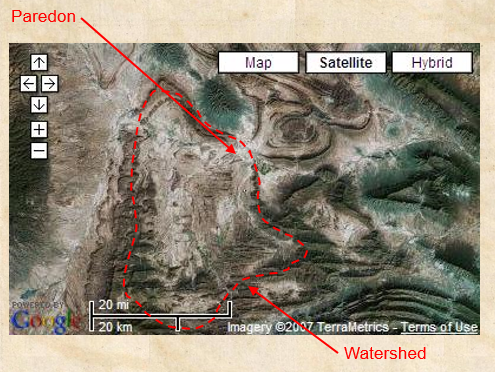
Area around Paredon
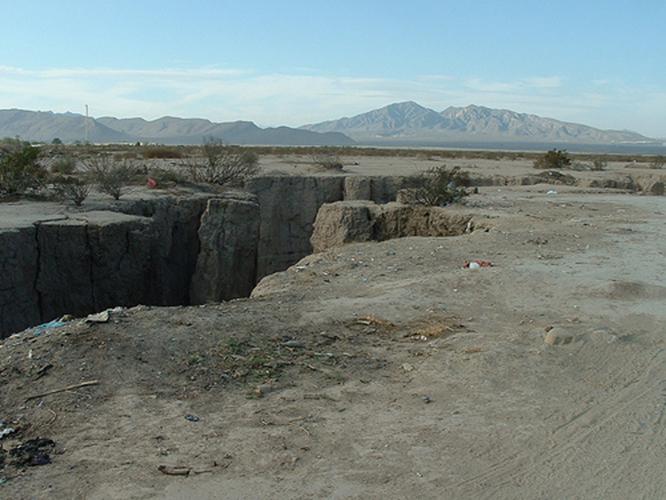
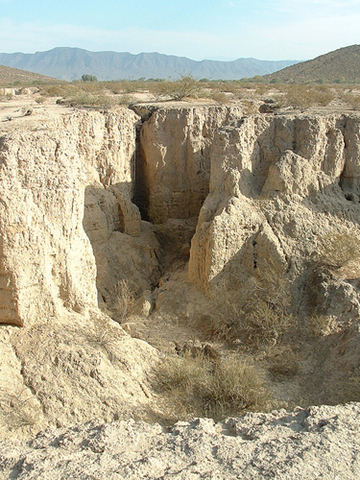
Note: Notice the layers in the sediments, indicating multiple deposits, not a one-time flood.
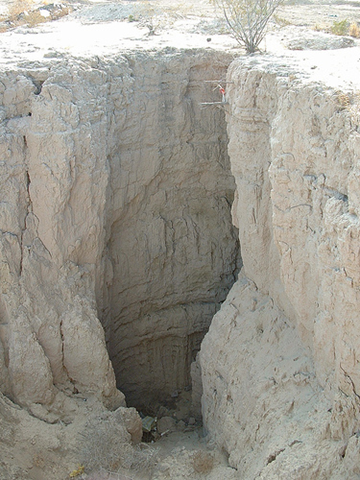
Note: Notice the layers in the sediments, indicating multiple deposits, not a one-time flood.
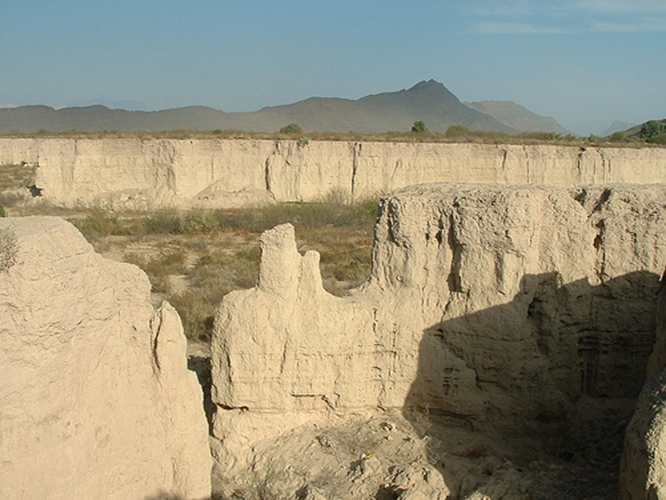
- Dr. Nicholas Leon did exist (he was a medical doctor)
- He was a "central clearinghouse" for reports that came in from various sources in the field.
- He never went to Paredon. He never verified the report personally.
- He received a field report. It looked valid, so he passed it on.
- Paredon (Lat 25.933, Long 100.967) is a desert environment
- The watershed is very small - it could not create a flood.
- Sediments accumulated over a very long time, not an immediate flood
- Very likely that bones found were mammoth/mastodon bones from before Book of Mormon times
- End Analysis
- The Paredon report is NOT evidence of elephants in Book of Mormon times
Copan: Stela B, 731 A.D.
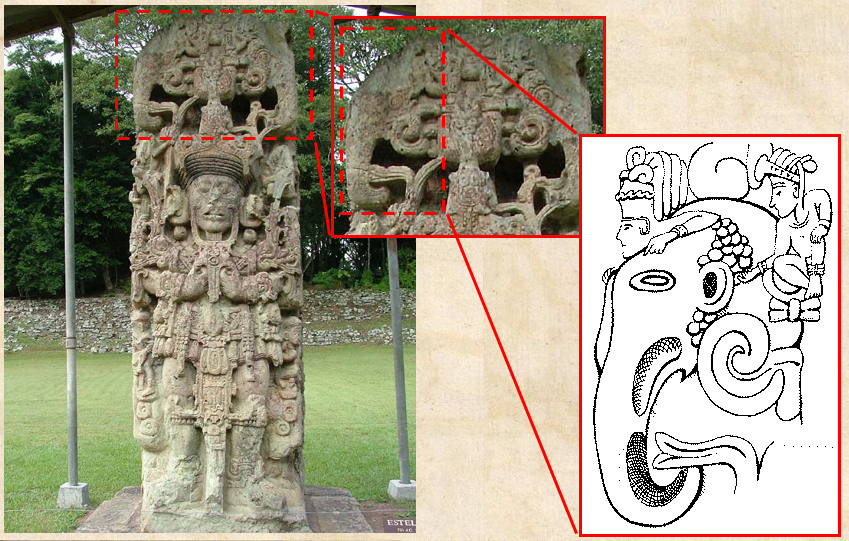
- What looks like an elephant is a stylized macaw
- Below are a few Mayan macaw glyphs
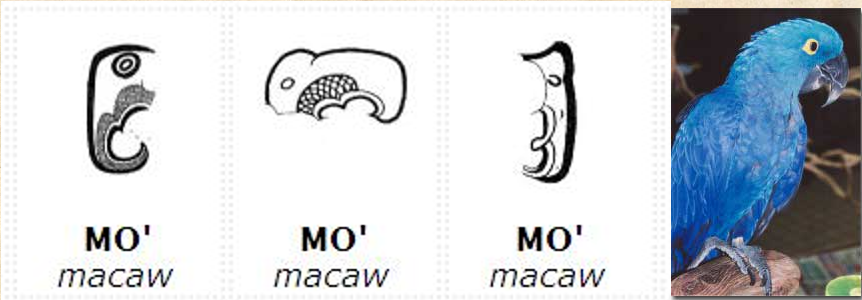
- End Analysis
- Copan: Stela B is NOT evidence of elephants in Book of Mormon times
Recency of Mammoth fossils
- "Also, some leading scientists now believe that some mammoths may have survived much later than previously thought, perhaps as recent as 4000 years ago."
- End Analysis
- This is suggestive of elephants in Book of Mormon times
Quito, Ecuador
- In 1926, Franz Spillman, paleontologist and Max Uhle, archaeologist, excavated in 1926 , an almost complete mastodon skeleton about 12 km. east of Quito, Ecuador, with associated obsidian and bone tools and about 150 potsherds. The animal had been killed, cooked and eaten at the site--at a time well after the introduction of pottery.
- A History of Land Mammals in the Western Hemisphere (Revised Ed.), pp. 128, 302. New York. The Macmillan Co., 1937.
- Cannot ascertain a date range (Valdavia 2b: 3090-2695 BC?)
- About 6,000 BC is the earliest recorded for pottery in the area
- End Analysis
- This is suggestive of elephants in Book of Mormon times, but the early possible date means it is not conclusive
Elephant pipes, Toolesboro Mounds, Iowa
- Elephant pipes
- Toolesboro Mounds, Iowa, excavated circa 1874 to 1878
- Toolesboro Mounds date to 200 BCE to 100 BCE
- End Analysis
- The time frame is during the Book of Mormon times, but, this doesn't put elephants in Mesoamerica
Mayan Elephant Glyphs
- Below are two Mayan glyphs representing elephants, Palenque (circa 600 AD)
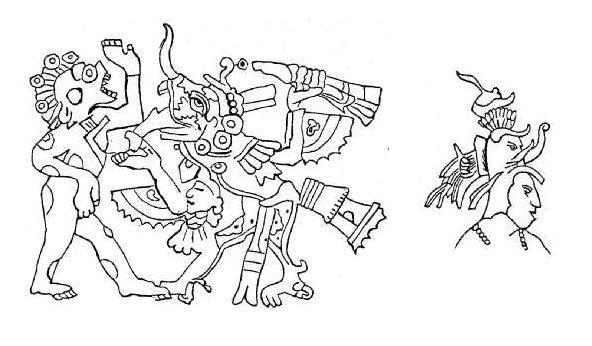
- End Analysis
- Evidence that shows elephants co-existed with man in Mesoamerica
Xalapa / Jalapa Museum
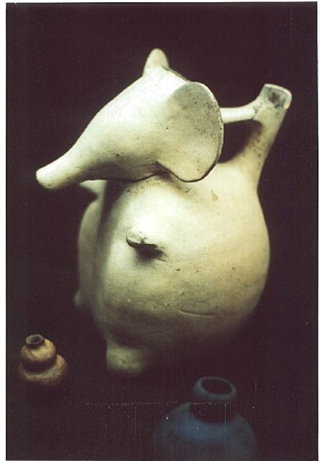
- End Analysis
- This is evidence of elephants in Mesoamerica during the time frame of the Jaredites
 Area around Paredon
Area around Paredon

 Note: Notice the layers in the sediments, indicating multiple deposits, not a one-time flood.
Note: Notice the layers in the sediments, indicating multiple deposits, not a one-time flood.
 Note: Notice the layers in the sediments, indicating multiple deposits, not a one-time flood.
Note: Notice the layers in the sediments, indicating multiple deposits, not a one-time flood.





